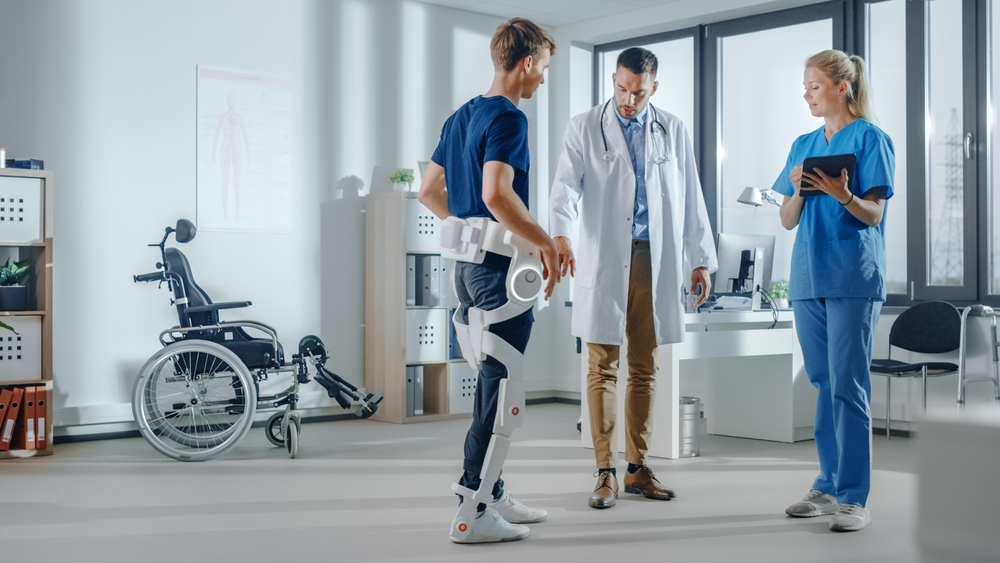As technology advances, it is bringing transformative changes to the way people with mobility issues navigate their environments. From urban infrastructure adaptations to cutting-edge assistive devices, these innovations are not only improving accessibility but also enhancing the quality of life for those who face mobility challenges. This blog explores the latest developments in transport technology and urban design, highlighting how they are reshaping our cities and communities to be more inclusive.
Robotic Assistance
Robotic assistance technologies are making significant strides in aiding individuals with mobility impairments. These technologies, such as robotic arms and feeding systems, are designed to perform daily tasks that some may find challenging. For example, advanced robots equipped with AI and computer vision can assist in feeding, an essential activity that can be difficult for those with limited motor skills. These systems are capable of handling complex tasks involving varied textures and consistencies of food, making them invaluable for personal care.
The integration of such technologies represents a growing field in assistive robotics, aimed at enhancing independence and reducing the need for carer assistance. This not only improves the quality of life for individuals but also provides peace of mind to their families.
Smart Infrastructure and Urban Design
Urban design plays a crucial role in ensuring that cities are navigable and safe for everyone, including those with disabilities. Modern urban planning increasingly incorporates elements of smart infrastructure that cater to the needs of all residents. For instance, tactile paving helps visually impaired individuals navigate safely, while audible signals at crosswalks provide cues for safe crossing. Additionally, curb ramps are essential for wheelchair users, making it easier to transition between sidewalks and streets.
Smart city technologies also contribute significantly to this inclusive vision. For example, internet enabled devices can provide real-time information about the accessibility of public transport options, like the availability of low-floor buses or operational elevators in subway stations. These advancements allow individuals to plan their journeys with greater confidence and convenience, making public spaces more welcoming and functional for everyone.
Micromobility Solutionmobilo
Micromobility solutions are becoming increasingly popular as they offer practical and flexible options for short-distance travel. This category includes a range of small, lightweight vehicles such as electric scooters, bikes, mobility scooters, and power wheelchairs. These vehicles are especially beneficial for individuals with mobility challenges, as they are designed to be easy to use and maneuver in urban settings.
Mobility scooters and power wheelchairs are particularly vital for many users, offering a level of independence that might otherwise be unattainable. These devices are equipped with features tailored to various needs, such as adjustable seating, enhanced stability controls, and long-lasting batteries. For instance, power wheelchairs often include advanced navigation controls and anti-tip features, providing both safety and comfort.
The rise of shared micromobility services also plays a role in this transformation. Cities are increasingly implementing programs that provide accessible scooters and bikes, ensuring that these services are inclusive. These vehicles are not only eco-friendly but also help reduce congestion and pollution, making them a sustainable choice for urban transport.
Conclusion
The landscape of transport technology and urban design is rapidly evolving to better accommodate people with mobility issues. From robotic assistance and smart infrastructure to micromobility solutions, these innovations are making cities more accessible and inclusive. As we continue to develop and integrate these technologies, we move closer to a future where mobility challenges are no longer a barrier to full participation in society.
These advancements ensure that everyone can navigate their environments safely and comfortably. By embracing these technologies and thoughtful urban planning, we can create cities that are not only technologically advanced but also compassionate and accommodating to all residents. This journey towards greater accessibility is essential, as it represents a broader societal shift towards recognizing and addressing the diverse needs of our communities.
Keep an eye for more latest news & updates on Hint Insider!




